From Non-Majors Biology to Critical Thinking: An Educator’s Journey
The moment is burned into my brain like a flashbulb memory. I was teaching Introduction to Biology, a general education class for students not majoring in science. It was near the end of the semester, and having just covered basic genetics, I was lecturing on the stages of mitosis.
My students looked completely deflated.
I had been teaching general biology for over a decade, eager to convince my students that science is awesome, that it improves the quality of their lives, and that science literacy is essential in today’s world. Biology is the study of life, after all, and science is one of the most reliable ways of knowing. I thought I had a solid case.
Unfortunately, few of my students agreed with me. I wouldn’t (necessarily) say they hated science. More science-phobic. And I could see it on their faces.
Too often non-majors biology is taught like a “baby bio” course, essentially a watered-down version of the introductory course taken by biology majors. But I wanted to do something different, so I had tried seemingly everything over the years. I changed the course nearly every semester (as much as possible) to reflect how relevant biology was to their daily lives. I used case studies, issues-based approaches, and problem-based learning. For example, my crisis moment came after we had just used genetics and evolutionary theory to test the concept of biological race, and we were in the process of applying mitosis to cancer.
But that moment hit me like a ton of bricks. My students were not going to remember, let alone use, what they were learning past the exam. Worse, the fears and anxieties they associated with science would continue to haunt them. I had squandered their one opportunity to gain the empowerment that comes with science literacy. (Like I said….Ton of bricks.)
Eureka!
Inspiration came in the form of a Carl Sagan quote:
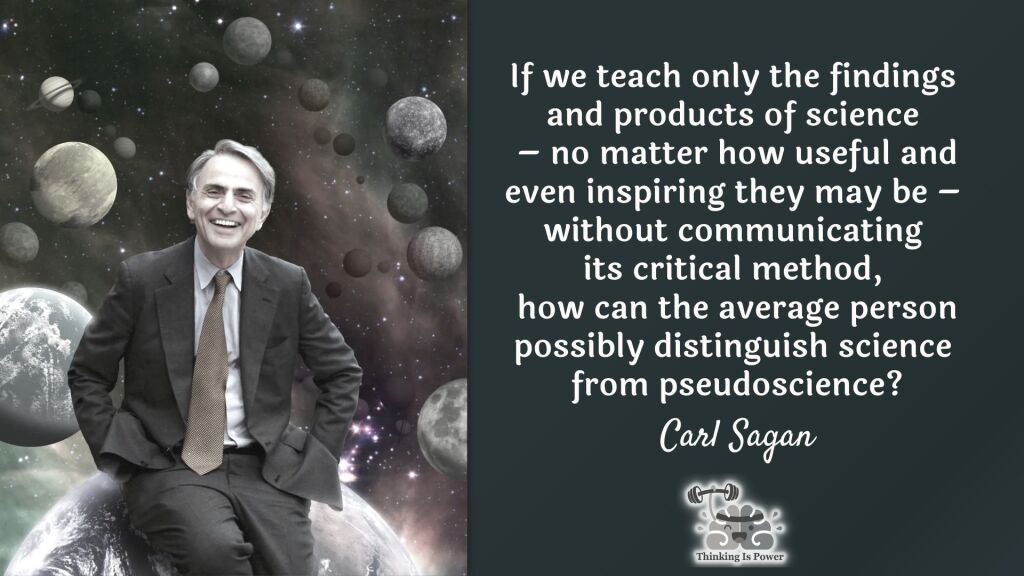

Holy beans was he right. Science is so much more than a bunch of facts to memorize. It’s a process. It’s a way of thinking about the world, of trying to get closer to the truth by subjecting explanations to testing and evidence to critical scrutiny. Science is a way of thinking…. Good thinking.
While nearly all faculty members say that teaching critical thinking skills is important, many students graduate without showing an improvement. One very likely reason is that only 19% of college instructors can define critical thinking!
So, what is critical thinking? There are many definitions, but essentially critical thinking is a, “reasonable, reflective thinking that is focused on deciding what to believe and do.” It includes problem-solving and the evaluation of hypotheses, arguments, conclusions, and beliefs. And it requires metacognition, or thinking about how we are thinking, and an attempt to avoid the cognitive biases and logical fallacies that may impact our ability to evaluate evidence and draw fair conclusions.
Like other science educators I had assumed that, since critical thinking is at the heart of scientific inquiry, I was teaching it in my classes. But like others, I wasn’t formally taught critical thinking. And I couldn’t teach what I didn’t know.
Sadly, instead of teaching students critical thinking and science reasoning, most of our gen-ed science classes focus on memorizing facts…..facts that will almost certainly change. After all, science is a never-ending process of building on good ideas and weeding out bad ones. And interestingly, as far as learning goes, less might be more. Research has shown that students in non-majors courses who were taught less content learned as much as majors who received more content.
In addition, the information available at our fingertips is mind-boggling, and it’s growing by the second. Students need information literacy skills to be good consumers of information if they are to make good decisions for themselves, their families, and their communities.
Undergraduates who aren’t STEM majors may take only one or two science classes, and those courses are often the last chance we have to teach students the science literacy skills necessary to be informed citizens. If we don’t teach students the process of science, how are they to know the difference between knowledge gained through a trustworthy process and unsupported or false claims? And isn’t that the point of science education?
I started digging to see what other educators were doing, and luckily I stumbled upon an article, “From Witches to Evolution: Making the Case for Scientific Literacy,” about an innovative course for non-majors designed to specifically teach science literacy. Even better, they had results that showed it worked! I contacted the study’s authors, who kindly allowed me to steal parts of their curriculum….. and I was off to the races!
Good-bye, “Baby Bio”…. Hello, Science for Life!
So I convinced the college to scrap introductory biology. Completely.
In its place, I developed a new course, Science for Life, that focuses less on the findings of science and more on science literacy and critical thinking. Students learn to evaluate the evidence for claims to determine how we know something. And they learn to recognize the characteristics of good science by evaluating bad science, pseudoscience, and science denial.
Unlike most science classes that start with the scientific method, I begin the semester with witches. Centuries ago, being accused of witchcraft and “confessing” under torture were sufficient evidence to convict and sentence a person (usually a woman) to death. Since most students today don’t believe that diseases and storms are caused by witches casting spells, they are able to more skeptically examine the supposed evidence and explore why people at the time had such strong beliefs. We like to think of ourselves as rationally following evidence to a conclusion, but more often than not, we form beliefs through irrational ways and look backwards for justifications. Our discussion naturally leads to epistemological questions, such as how do we know what we know, and how knowing is different than believing.
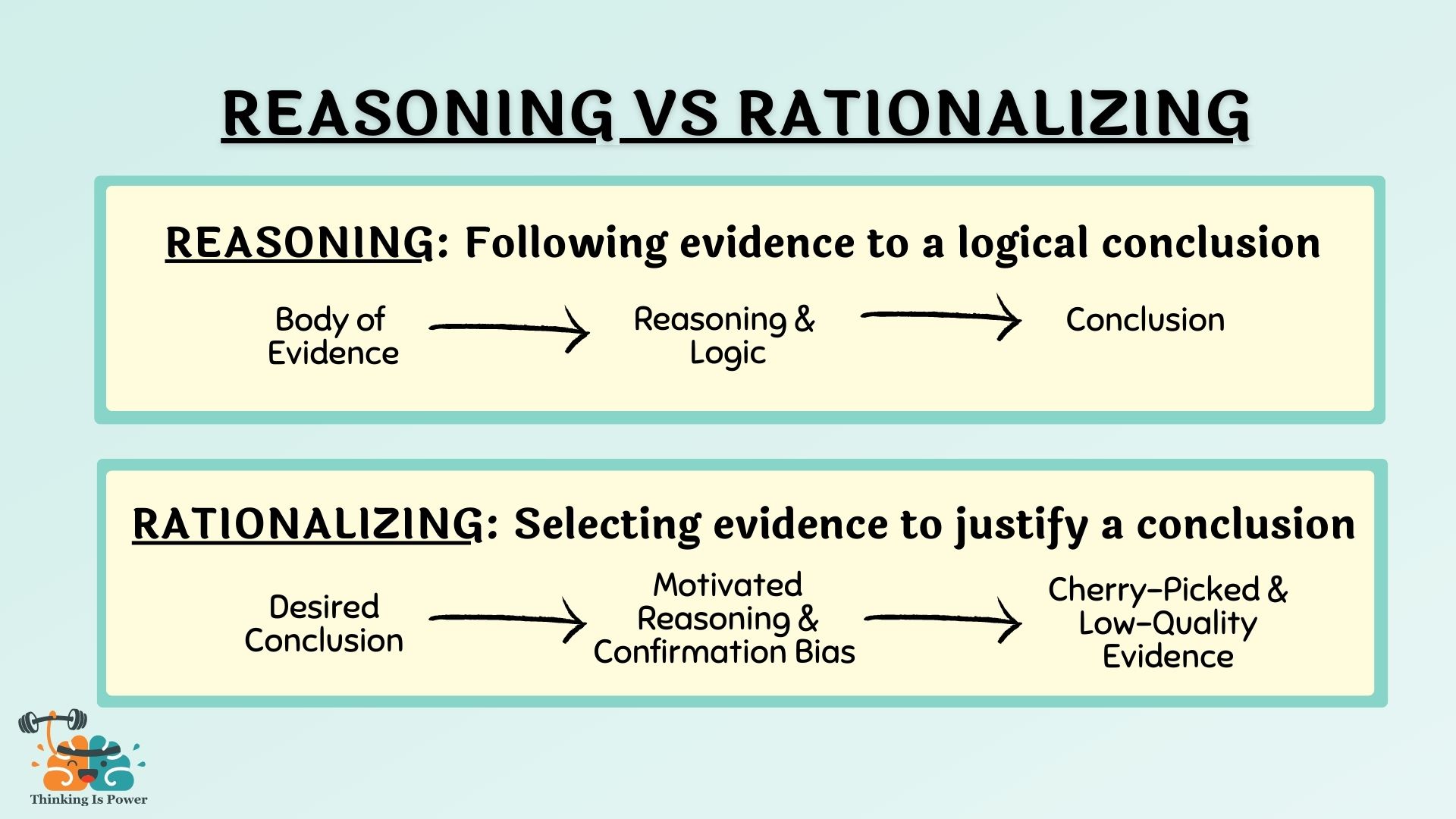

I then introduce scientific skepticism and provide students with a toolkit for evaluating claims, summarized by the acronym FLOATER. The principles in FLOATER (Falsifiability, Logic, Objectivity, Alternative explanations, Tentative conclusions, Evidence, and Replicability) encapsulate the essence of critical thinking and the process of science.
Through repeated practice, students learn to use scientific reasoning to evaluate claims, because pseudoscientific and unreliable claims fail at least one of the rules in FLOATER.
[To see the updated toolkit: FLOATER: A toolkit for evaluating claims]
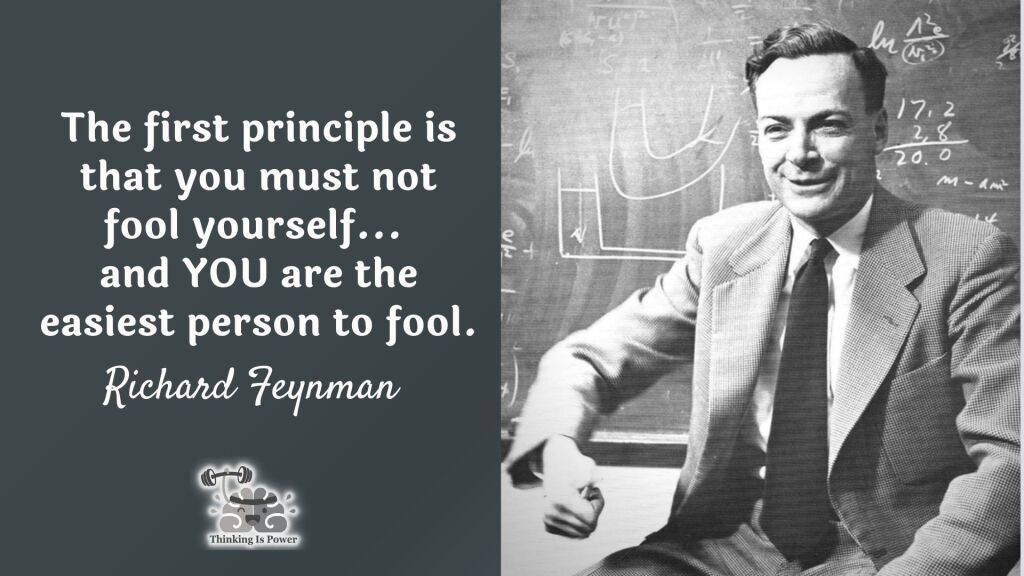

Next is one of the most important lessons in the course….the limits of perception and memory. For many, personal experiences are the best way to “know” something. Whether it’s believing in UFOs because they’ve “seen” one or that homeopathy is effective because it “worked” for them, we often fail to recognize that our perceptions are subjective and highly biased and that our memories are flawed and unreliable. Understanding this is essential for recognizing why anecdotes are unreliable evidence.
“Our memories and how it can be changed by simple suggestions that you didn’t even pick up on. A memory was always a fact to me, like playing back a recording. Now I understand how wrong I was. This was even more important to know and use in my profession as a police officer.”
Science for Life Student
We then dive into metacognition, or thinking about thinking. Our brains have to process a lot of information, but they’re lazy, so much of it is done on autopilot. This fast, intuitive thinking uses mental short-cuts (ie heuristics) which leads to errors (ie cognitive biases) that deviate our thinking from reality. Metacognition has been shown to improve one’s ability to learn, and the skill is transferable to new disciplines and tasks. Ultimately, the goal is to teach students how to think better by being aware of how they are thinking and recognizing the limits of what they know.
After students have an understanding of how flawed their thinking is and the importance of skepticism, we dive into information literacy. We live our lives online, and it can be difficult to discern between reliable and unreliable information. In fact, we are most likely to fall for misinformation when it confirms what we already believe is true and triggers strong emotions. Thankfully, the concepts covered in class thus far provide students with the background knowledge to begin to skeptically evaluate sources and claims online.
“Over the duration of this course, I’ve come to realize that a lot of the issues with our society are simply because we are bombarded with information that exists at our fingertips, and that is pushed at us from numerous sources, all too willing to confirm our beliefs rather than impart facts. If people knew how to be properly skeptical, and how to do real research into the credibility of sources and how to find factual information, this would be a much different world.”
Science for Life Student
By the time I introduce the process of science, students have an understanding of why science is reliable and necessary. To reiterate…. science is good thinking. We are biased and irrational, and at its core, science is a way of knowing that recognizes and corrects for our biases. Consider the double-blind randomized controlled trials used to test new medications. Every aspect of these studies, such as the blinding, use of placebos, and random sampling, are correcting for potential biases to determine if the drug actually works. By building up a justification for science, the logic of the scientific process falls into place.
Speaking of the scientific method, there isn’t one, and we do our students a disservice when we teach it as such. While most textbooks start with a recipe-like formula, from observation to hypothesis to experiment, in reality most science doesn’t follow these steps. Science is a community of experts using diverse methods to gather evidence and scrutinize claims. There are endless ways to “do” science. For example, not all science uses controlled experiments. Observational science, such as discovery science, historical science, and epidemiology, collects data in the “real world.” Importantly, different types of studies provide different types and qualities of evidence. A broader understanding of the nature of science, which is essentially evidence-based thinking, equips students to evaluate evidence for any particular claim.
“For most of my life, I assumed skepticism was having a negative outlook on life. Now I know it is actually a vital tool we should all use while taking in information in our daily lives. I think the most valuable thing I’ve learned is that evidence is vastly underrated and overlooked in most people’s everyday lives.”
Science for Life Student
Throughout the course, lectures, quizzes, case studies, and assignments are used to explore real world issues relevant to students and to provide opportunities to practice evaluating claims. Topics include ghosts, psychics, fake news, fad diets, crystal healing, conspiracy theories, the Loch Ness monster, the MMR vaccine and autism “controversy,” homeopathy, astrology, and climate change denial. Many students believe in various forms of pseudoscience, and its inclusion increases engagement and teaches them how to recognize it in their daily lives. Importantly, these issues help students understand why it’s important to think critically, because being fooled can lead to real harm.
Finally, many activities are based on inoculation theory, which is similar to how vaccines work but for misinformation. Basically, exposure to a bit of misinformation can help build up immunity to the real thing. Even better, learning the logical fallacies being used to mislead is transferable to other forms of misinformation. In some activities students use humor to create misinformation, such as an advertisement for a pseudoscientific alternative medicine product, and a discussion in which they use fallacies to argue why they shouldn’t fail the course.
“I live in a world full of lies made by people that mainly just want my money or my help making money. Most important class I’ve taken, ever.”
Science for Life Student
The bottom line: Skills are more important than facts
Science literacy is about more than memorizing facts. Instead of teaching students what to think, a good science education teaches them how to think. By emphasizing process over content, students gain the skills necessary to think better, and therefore make better decisions. In addition, the ability to think critically has never been more important. We owe it to our students (and society) to teach them curiosity, skepticism, and humility.
The premise of Science for Life is intellectual empowerment. So, like I tell students at the end of every class, “Thinking is power. Demand evidence and think critically!”
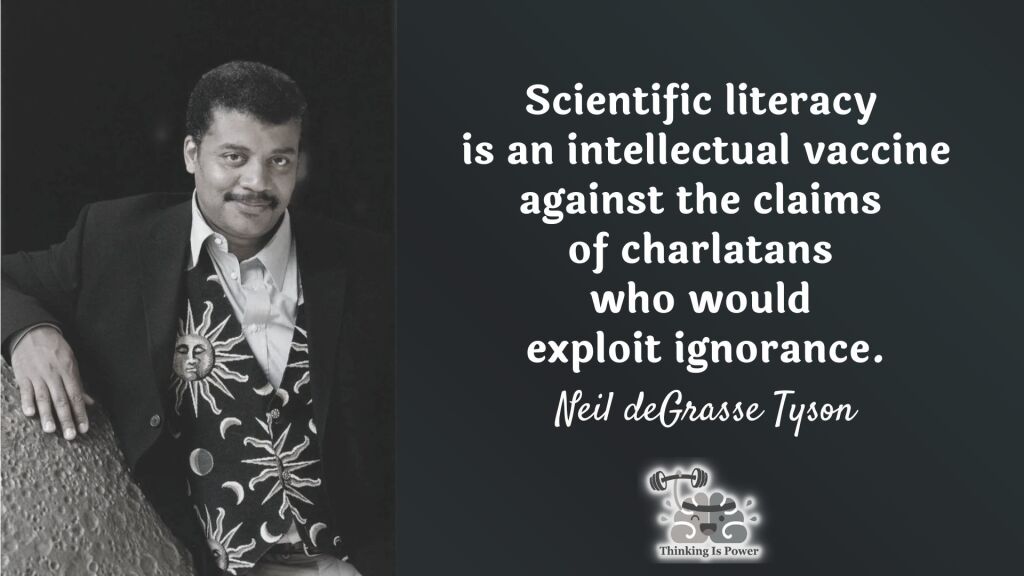

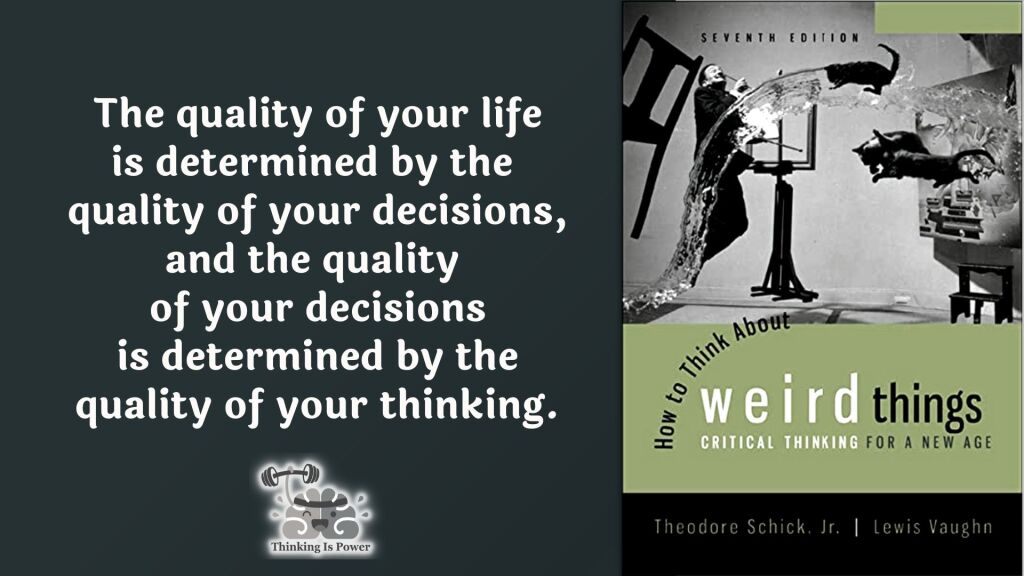

To learn more, please subscribe, leave a comment below, or contact me
For more inspiration
Rowe M. P., Gillespie B. M., Harris K. R., Koether S. D., Shannon L.-J. Y., and Rose L.A. 2015. Redesigning a general education science course to promote critical thinking. CBE Life Sci. Educ. 14: 1–11.
Gillespie, M., Koether, S.D., and Lewis, M. L. 2016. Fostering the disposition to think critically and a positive attitude toward science: The results of a successful six-year study of an innovative, general education integrated science course. Inquiry: Critical Thinking Across the Disciplines 31 (2):5-26.
Special thanks to Matt P. Rowe for his feedback and guidance.
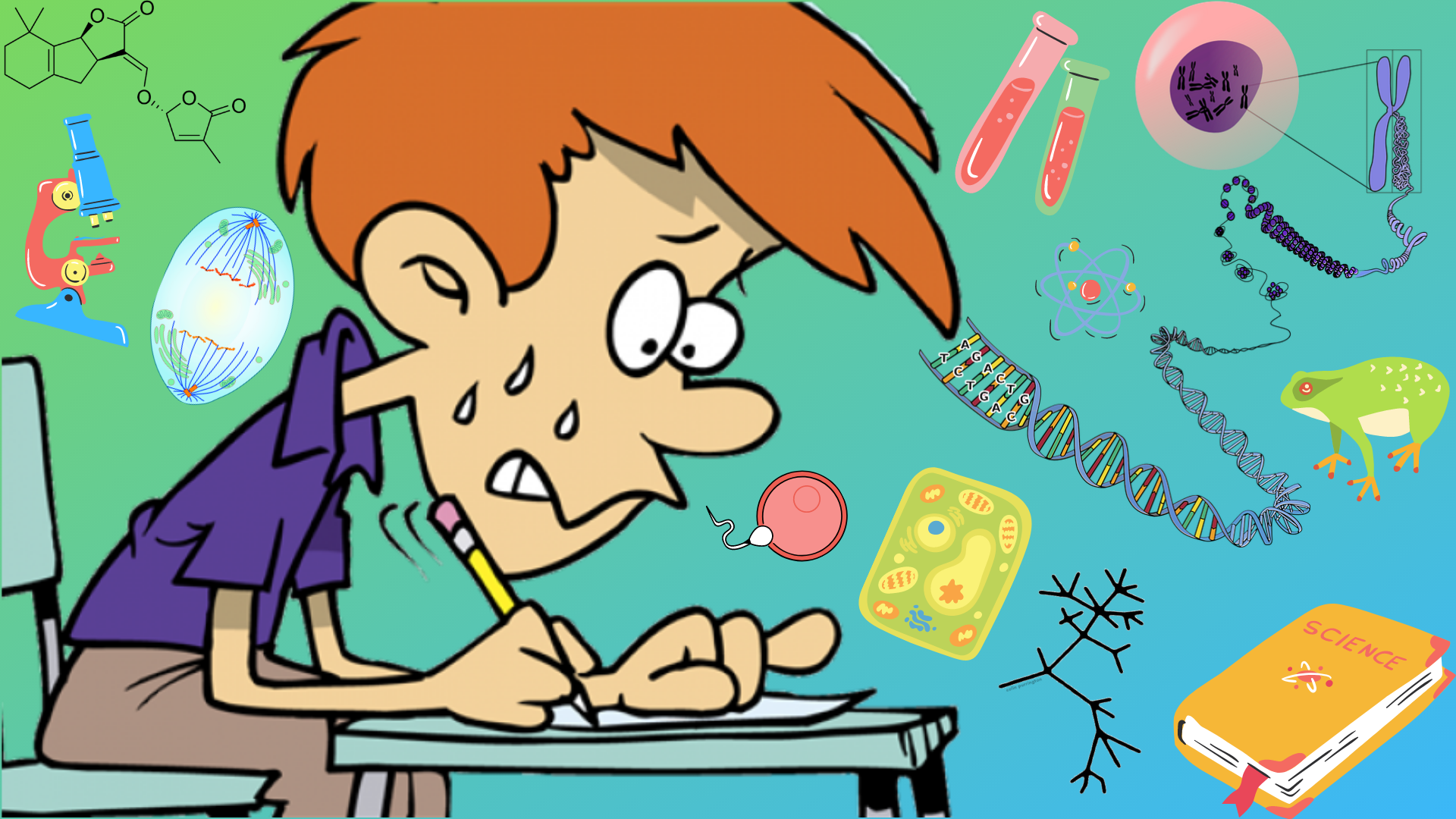
Excellent article Melanie! I am glad you are teaching Science for Life!
Why thank you!
I’m going to have to go away and think about this!
Sorry?
Don’t be sorry, Prof! I needed time to adjust my thoughts. My understanding is that John Cook takes an in-depth look at detecting and debunking false information. This, on the other hand, is just a subset of your course on the wider topic of critical thinking in general. Have I got that right or have I misunderstood?
In any event, my interest lies in the need to teach critical thinking to high-school pupils. John Cook seems to have had some success with his Cranky Uncle in schools. What would have to be done therefore is to incorporate FLICC and Cranky Uncle into a broader course on critical thinking for high schools. So, Prof, have you thought of adapting your course in this way?
Thanks for the clarification. You are correct that John Cook’s focus is on teaching people to recognize the characteristics of science denial through critical thinking. I use Cranky Uncle in the part of my course that I call “Science’s Pretenders”, which includes pseudoscience and science denial. His approach fits in perfectly with my content and teaching approach.
The course described in this post has been taught at high schools through dual enrollment programs and we’re looking to scale up to include more high schools. I see no reason why this course, or one like it, can’t be taught widely at the high school level. In fact, that’s exactly what I was hoping would happen!
Go for it!
Absolutely loved this!
It would be a good deed if you sqrutinized the youtube channel of dr John Campbell. He is seen as an objective source of Covid-information for many. But all he do is selecting snippets of information and drawing conclusions from that. He is a good example of a bad example:)
Thanks for your comment!
I hadn’t heard of John Campbell, so thank you for drawing my attention to him. Based on my brief searching he appears to be a good source of basic science information as it relates to COVID-19.
Pingback: Ensinar ciência com pensamento crítico
I am beyond impressed. Thank you for starting this revival of epistemology. The whole world is in need of inoculation against misinformation. How do we get your knowledge into the public school curriculum? What is the right age to start? Do you go school board by school board or approach higher levels of government?
Hi and thanks for your comment and kind words!
I wish I knew how to reach more educators, but with local control over schools in the US it’s pretty difficult. I’m trying to get more reach on social media, and I’m presenting at educational conferences (eg the National Science Teaching Association National Conference this summer)…as well as any other place where people are willing to hear me speak.
If you have thoughts I’m all ears!
Thanks again
Melanie
Do you have any other websites that say about the scientific method precisely as this one I found?
https://undsci.berkeley.edu/understanding-science-101/how-science-works/
Interesting!
I saw many videos that teach process of science using steps-by-steps, and these videos alway have examples how to think in these steps. For a long time, I think this is the real process of science, it is how science works. It is unintuitive to perform it in every problem every day. So I think science is only for the fews.
But time passed I realize there is something not right, I see scientists work as a community, publish paper, design creative experiments to test ideas, science is only tentative and never conclude with absolute certainty,… Then I found your website, my view have changed and I learn a lot, thank you!
Beside, I also found this website that teach REAL process of science. If you have any other websites like this one you can share me.
https://undsci.berkeley.edu/understanding-science-101/how-science-works/
Hello, and thanks for the kind words!
You’re SO right: many of us don’t understand what science is and why it’s reliable. Understanding Evolution is a great resource, and one I’ve used for years. You might also like this article and the resources at the bottom (you’ll recognize at least one of them!).
Thanks for the comment. Let me know if I can answer any further questions.
Melanie
I’m from Sweden so my perspective is surely different from yours (USA).
I’ve read and seen about the state the USA is in so I absolutely understand why your course is direly needed.
Im getting convinced your course should be mandatory in both junior high (grade 7-9) and gymnasium (grade 10-12)
I couldn’t agree more. I teach undergrads, but this kind of education should start at least in middle school.
On a side note: Sweden is a wonderful place. You’re very lucky.
Melanie
I would love to talk to you more about this. I have felt this way for a long time, but not just about non-science majors. We do a disservice to our majors as well if we don’t teach these skills, and most majors take a year-long sequence of fact after fact. We need to start treating our majors like our non-majors, they all need the same skills. I am currently taking over the majors biology sequence at our college, and plan to not only follow the Vision and Change document, but these ideas and course-based research. Thanks for the ideas, and support.
Hi Nick,
Thanks for your comment! I couldn’t agree with you more: while my focus was general-education science, we don’t teach our majors these skills very well, if at all. While there’s obviously variability – and I’m generalizing – we spend the vast majority of an undergrad science education requiring student memorize what the field has learned…as opposed to how we learned those facts.
Feel free to reach out if you’d like to discuss more.
Melanie
Pingback: Joys of the World Wild Web | Neil's Commonplace Book